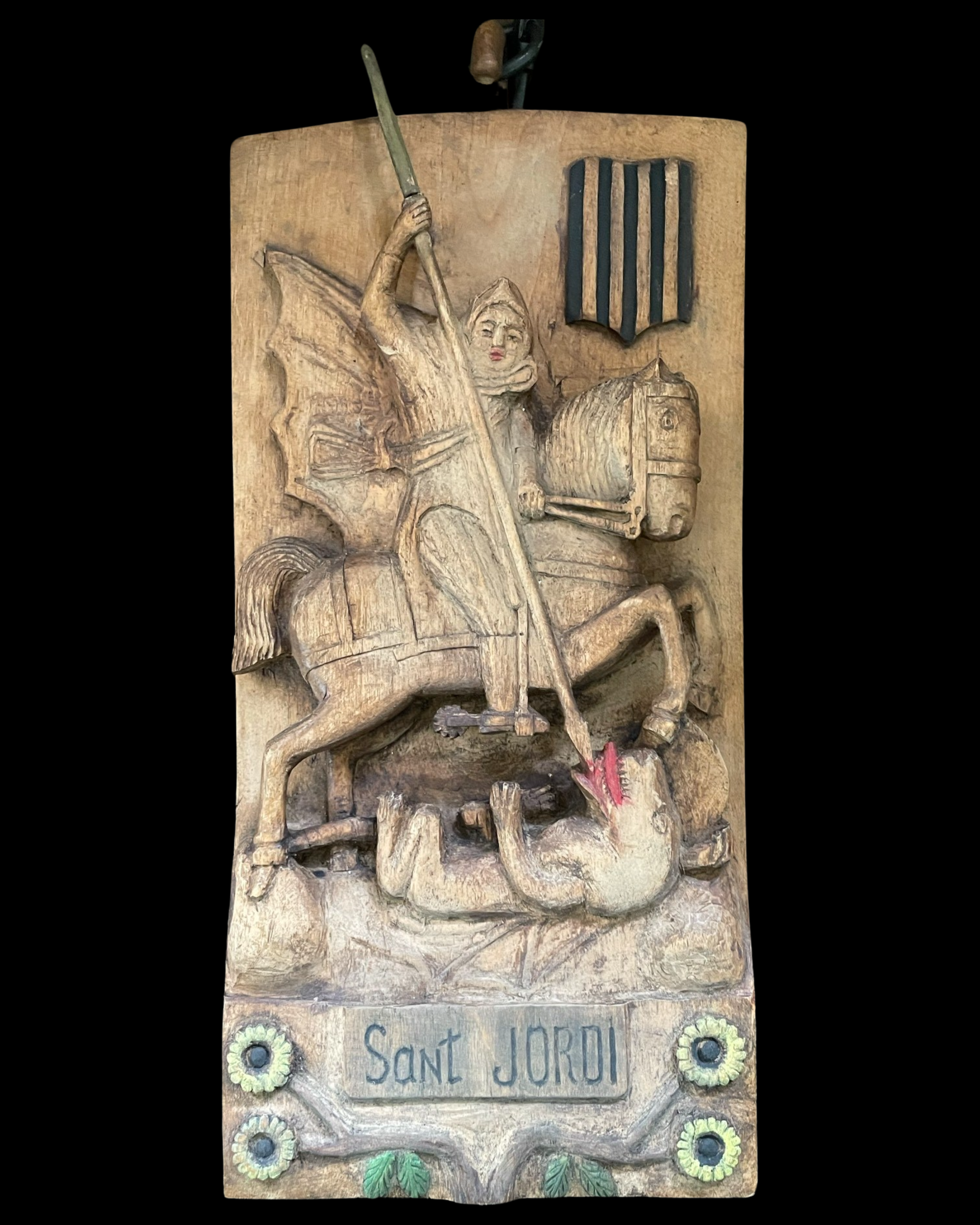April 23: A Day of Books and Roses
Unpacking the Legend and Legacy of Saint George in the Year of the Dragon
A Sant Jordi’s Day Vignette at the House of Good Fortune
Let us venture back to Catalonia, where we encounter a tradition steeped in the rich tapestry of chivalry and literature. St. Jordi’s Day, celebrated on the 23rd of April, is not merely a holiday; it is the embodiment of the Catalan spirit, where love intertwines with the written word. Each year on this day, the streets of Catalonia bloom with stalls of books and roses, and the iconic buildings of Barcelona are adorned with roses, banners and the Catalan flag (La Senyera). On this day, it is customary for men to present a red rose to the important women in their life and for women to present men with books.
The Origins: Sant Jordi (aka Saint George) is regarded as a figure of martyrdom and courage. His defiance against the persecution of his faith led to his execution in the year 303 CE. His legacy, however, was immortalized in the Middle Ages, as he became the revered patron saint of Catalonia. In the 15th century, during Catalonia’s golden era, Sant Jordi was venerated as the knight in shining armor in the folklore of Catalan conquests and crusades. In 1456, the government’s proclamation of Sant Jordi as the patron saint solidified his place in the hearts of the Catalan people.
The Legend: The tale of Sant Jordi is one of valor and sacrifice. The knight slayed a dragon who was terrorizing a village and from the dragon’s blood, sprouted a rose bush. Sant Jordi picked a single bloom and presented it to a princess, and this legendary rose has become an emblem of bravery and love, woven into the very fabric of Catalan identity.
Contemporary Celebrations: The tradition that we observe today, where men gift roses and women bestow books, is a relatively modern evolution, tracing back to the early 20th century. April 23 was declared World Book Day because the date coincides with the commemoration of literary giants such as William Shakespeare, Miguel de Cervantes, and Garcilaso de la Vega, who all departed this world on April 23rd. This exchange of roses and books has become a symbol of cultural romance, and in modern times the gifting is not strictly dictated by gender.
In this celebration, we witness a living narrative that captures the essence of Catalan pride—a fusion of love’s warmth and the reverence for the written word. It is a testament to the enduring spirit of a people and their culture.
The House’s focus on this tradition during 2024 —the year of the dragon — is intentional. In the Western world, the dragon serves as an object of scorn and a symbol of evil; Saint George/Jordi is one of its primary antagonists, and his success in slaying the dragon represents the triumph of good over evil. In contrast, in the East, the dragon is revered as one of the rulers of the natural world and serves as a symbol of power.
What do these perspectives reveal about their respective cultures? In the West, a man is venerated for triumphing over an evil beast, and in the East, a beast is revered as a symbol of imperial power and inconquerable strength.
Further Reading:
Scatological Superstitions: https://www.houseofgoodfortune.org/bonheur-blog/scatological-superstitions
Enter the Dragon: https://www.houseofgoodfortune.org/bonheur-blog/tigeranddragon
Saint George and the Dragon; South German; ca. 1460–70; from the collection of The Metropolitan Museum of Art
Wooden plaque depicting Sant Jordi, House of Good Fortune Collection via Adam from Dark Interiors



